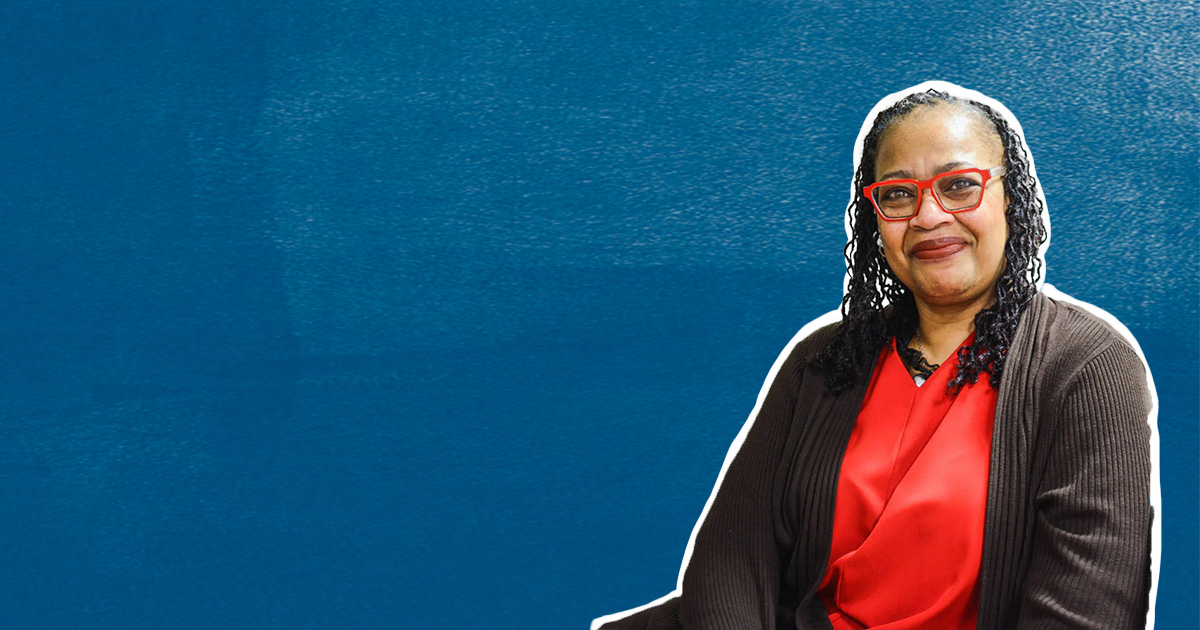Race, inclusion, diversity—these are the issues that Kogod professor Sonya Grier focuses all of her energy on; and when she talks about her work, her passion shines through.
“There’s definitely been a change in my research that I’m excited about,” she said. “Now I’m going into [my work] with intentional approaches and more understanding of the critical literature to focus on.”
For the past 10 years, Grier researched health, well-being, and obesity in underrepresented and disadvantaged communities. The turning point in her research started when the Race in the Marketplace (RIM) Network launched in 2016. RIM was born out of a problem—that marketing didn't focus on race. Now, Grier’s constantly on the move, contributing to multiple projects, papers, and organizations.
One of the papers she’s working on, “The Multicultural Bridge,” is for this year’s Transformative Consumer Research conference, a movement started by David Mick of the University of Virginia’s McIntire School of Commerce to better focus on what impacts consumers and improves their well-being.
As part of the “Multicultural Healing” track for the conference, Grier and her colleagues developed a paper that looks at creating a bridge to multicultural engagement, rather than multicultural tolerance.
“Everything in the popular press is talking about inclusion, and that’s not just about inclusion,” she said. “You can have all the diversity in the world but that doesn’t mean you have inclusion.”
Grier recently co-authored a paper that digs into this “faux diversity,” aptly titled “Dog Parks and Coffee Shops: Faux Diversity and Consumption in Gentrifying Neighborhoods.” In it, she drives home what faux diversity is—seeing diversity without truly engaging with different groups of people.
“This paper isn’t about tolerance,” Grier said. “It’s about engagement and being proactive. We take a real moral stance in that paper.”
Grier has infused this perspective into every element of her research, and she’s narrowed her focus on DC’s neighborhood’s and inclusive businesses. Recently, she gave a talk to a group of black women entrepreneurs about gentrification in the neighborhoods.
And as a marketing professor, Grier brings these areas of interest into the classroom. She challenges her students to confront difficult marketing topics, and recently presented them with an assignment on JUUL, an electronic cigarette company.
She found that her students were adept at understanding the younger generation and why they were “juuling.” For example, she received a paper titled, “JUUL Still Uses Facebook,” a nod to the fact that the product is used by an older demographic, just like Facebook. The tie back to her work is that the goal for this project was to get students thinking about how companies target vulnerable demographics.
Amidst all of the incredible work she’s done, Grier has had to learn how to maneuver conversations about race, diversity, and inclusion. Currently, she is working on a paper that digs into strategies to improve diverse faculty in business schools—and many of the professors interviewed asked to remain anonymous. This proved troubling, since there are less minority faculty, making it easy for them to be identified by even the smallest description. And without providing examples, it’s hard to explain the problems in the recruiting process.
One of the go-to questions Grier asks all of her interview subjects throughout her research is to explain what diversity means.
“Diversity is not actionable,” she said. “You can’t make strategies and policies to affect diverse groups that have the same effect on groups that are not similarly situated. Racial issues are different from gender issues are different from disability issues but we like to clump them all together and just say diversity, and diversity means everything. That ends up meaning nothing.”
But Grier hopes to change the conversation through her work, to help people become more comfortable talking about race and develop a better understanding of it.
